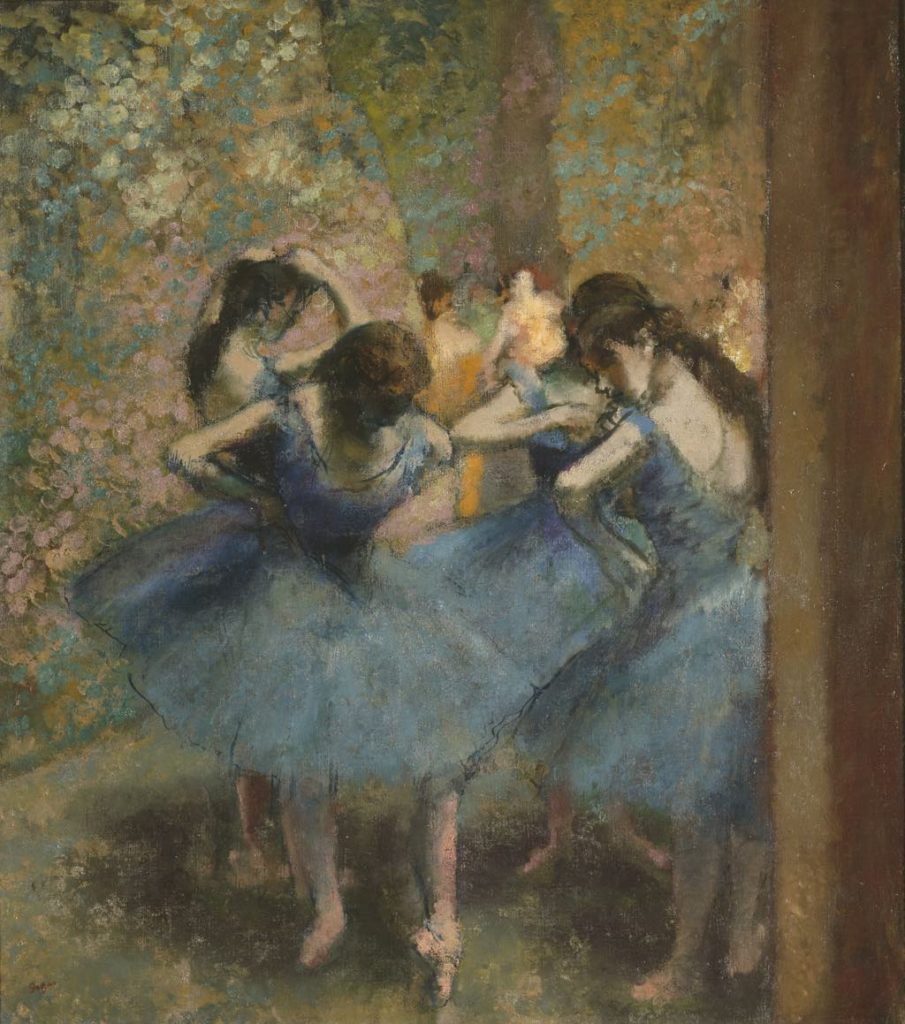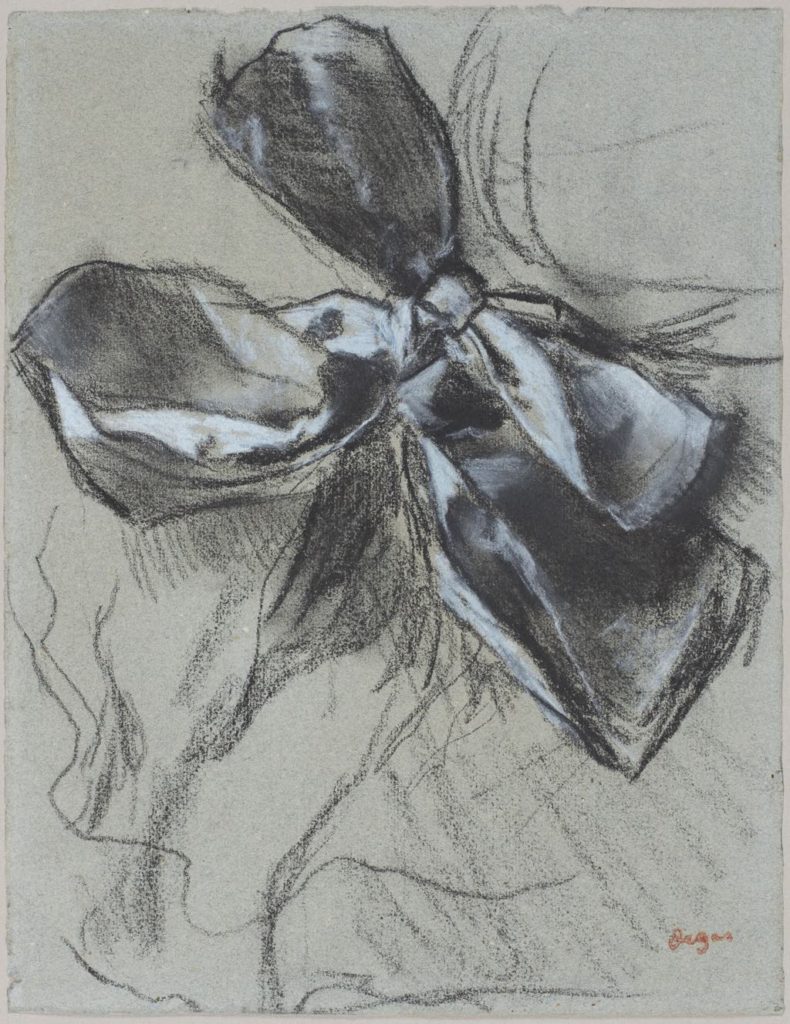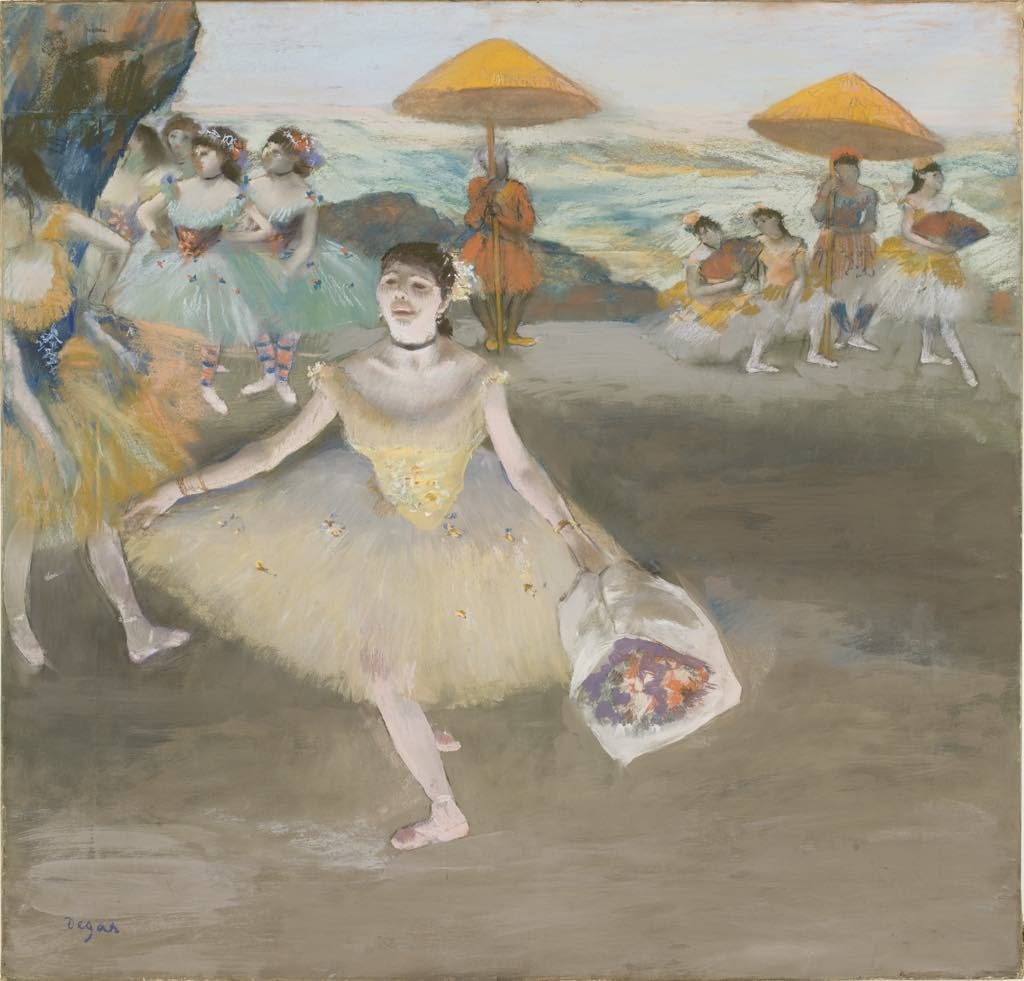
Looking for a new angle on the work of Edgar Degas to mark the hundredth anniversary of the artist’s death, the Musée d’Orsay has turned to a book written about the artist by his friend, the poet Paul Valéry: Degas Danse Dessin, published in 1938 by the famed Paris gallerist Ambroise Vollard. The exhibition of the same name is nicely described in the wall text as the draftsman’s line intersecting with lines of thought.
Many visitors will probably want to breeze through the first section of the show, which consists mostly of documentation (letters, photos, notebooks, etc.), although there are a number of little gems on display.
I particularly appreciated seeing the notes passed back and forth between the artist and the poet through the Parisian system of pneumatic tubes: a short letter referred to as a “petit bleu” would zip through a maze of underground pipes and arrive at the recipient’s home within 30 minutes. It was the e-mail of the day, and nearly as fast. The messages go like this: “Was I dreaming, my dear Valéry, or are you coming to dine with me this evening, Tuesday? Let me know. Warm regards, Degas.”
It was also interesting to see Valéry’s notebooks, adorned with drawings that showed that he was no slouch himself as an artist.
The poet’s observations on the work of Degas and on art and drawing in general are scattered throughout the exhibition in the form of quotations on the walls and are worth reading. I especially appreciated this excerpt from the book: “There is a huge difference between seeing something without a pencil in your hand and seeing it while drawing it. Or rather you are seeing two quite different things. Even the most familiar object becomes something else entirely when you apply yourself to drawing it: you become aware that you did not know it, that you had never truly seen it. … It dawns on me that I did not know what I knew: my best friend’s nose.”

Numerous drawings attest to the fact that Degas, although avant-garde for his time, took great pains to make many preparatory drawings for his paintings, in the way of the Old Masters. Another quote from the book illuminates his working method: “He is not aiming for grace or conspicuous poetry. His works are not lyrical. … Fundamentally resolute, never satisfied with the first attempt, mentally fully braced for criticism and overly steeped in the work of the great masters, he never cedes to natural voluptuousness.” The drawing of a bow above, one of these preparatory works, amply illustrates how assiduous the artist was in perfecting every detail of a work.

Finally, we come to the works in oil and pastel, and not just those wonderfully colored, light-filled dance scenes, but also portraits and horse-riding scenes. Among them is his wonderful painting “Repasseuses” (1884-86), in which one laundress indulges herself in a voluptuous yawn while the other puts all her strength into pressing down on her iron with both hands. You can almost feel the effort and force she is putting into her work.
There are also a number of bronze sculptures of dancers and horses made after Degas’ death from wax figures in his studio. Although they are not “authentic” (i.e., their production was not instigated or supervised by the artist), they give a good idea of his obsession with depicting movement and with perfecting the representation of his subjects.
Most of the works in the exhibition are from the Musée d’Orsay’s own collection and archives, and while the show sometimes seems to go off-subject, it is always worth seeing the works of the master again, and it is a pleasure to be introduced to the thinking of Valéry, a poet whose work, according to the curators, has been unfairly neglected.
If you enjoyed this article, you might also be interested in L’Art du Pastel: From Degas to Redon at the Petit Palais.
Favorite

Your site’s a delight!
If only the restaurants could fly takeout to me.